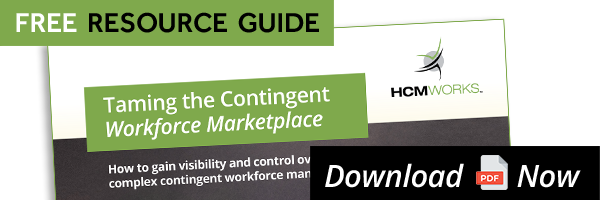Contingent workforce management is complex. Without a proper strategy that centralizes how you manage your temporary workers, it's almost certain that your business has no visibility into its contingent workforce and is spending large amounts of money on rogue costs.
In our previous blog, 'How to Successfully Manage Contingent Workforce Costs - Part 1', we looked at the importance of better sourcing in your contingent workforce and how it can help your organize reduce spending.
To improve your contingent workforce management strategy even further, the second part of this blog will take a look at rate cards and value engineering strategies that will help you reduce your costs. Let's start with rate cards.
#2 - Your rate card strategy
The majority of companies believe that cost management is just negotiating staffing vendor markups, but this is just part of the process.
In our experience, companies tend to lack a clear view of the going market rate for the different types of contingent workers they engage. This creates a trend for paying much more than the prudent rate for your contingent workers. Some people may see the differences as negligible, but in fact even a smaller variance in the hourly rate can add up easily over a contract length, creating the potential of thousands in extra costs.
In addition, hiring contingent workers tends to be disparate, and companies tend to discover that they are paying fluctuating rates for the same category of workers. To put it into context, sometimes the same contingent worker is offered by several vendors at vastly different rates.
So how can you manage your rate cards and create a sturdy cost management strategy? We’d recommend you create a comprehensive job catalogue, allowing for a holistic view of your contingent workforce and your contingent program. The job log should have the job description, job title and the average low and high rates paid for this position.
Upon creation of the job log, you can evaluate the rates and determine if they match up with the current market rates for comparable positions. When we create a rate card, we tend to use two unbiased external data points from neutral organizations whom monitor market rates, in addition to our own research, extensive market knowledge, and understanding.
After you’ve evaluated the current rates, you will have a good idea of the baseline cost, allowing you to manage rates more effectively. Understanding the baseline cost can facilitate a solid pay rate strategy that balances rates with working conditions to achieve your optimal cost reduction.
Now when you are negotiating with staffing vendors, be prepared to create a mutually beneficial deal instead of holding the vendors to a fixed markup and overpaying due to the rate being far above the fair market rate. The negotiated rate card should then be made available throughout the company, with steps to ensure compliance by all your hiring managers, limiting your rogue spend.
#3 - Creating a value engineering strategy
It is important to understand, and not underestimate the sheer amount of time and energy spent on your contingent workforce strategy. This will help you understand where the inefficiencies are in the process, so you can fix them. From hiring managers, to finance and procurement, to internal recruiters, here’s a few examples of these inefficiencies:
- Inefficient use of time when onboarding, setting up independent contractors as vendors for payment and the increase in payroll activity and flood of invoices that go along with it.
- Rushing to source the correct resources at the last minute, and frantically reaching out to a series of staffing vendors hoping to find a quality qualified candidate at a moment’s notice.
- The costly and time-intensive process of qualifying the resources, including, but not limited to, vetting, interviewing and screening
Value engineering is seen as a structured approach which allows more time and resources to be freed up for your human resources team and lets finance and procurement do more important tasks.
A value engineering strategy analyzes all contingent workforce management process activity, and identifies ways to outsource non-productive tasks to an external party.
This external party would normally handle the sourcing section, oversee job requisitions, handle both onboarding and offboarding and make a single consolidated invoice for all of your contingent workforce which is reported and coded in a way that is clear to your company.
If you are interested in discussing these ideas or exploring other ways to manage your contingent workforce and better manage costs, contact one of our contingent workforce management advisors today.





